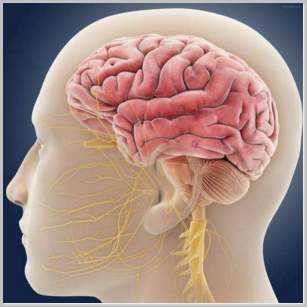 The Human Thalamus: A Data-Gatherer and Information Relay Station Second to None
The Human Thalamus: A Data-Gatherer and Information Relay Station Second to None
The term relay; it can refer to a baton-transferring race, or a transmitting beacon. It can also refer to any one of a number of ways in which information proceeds from point A. to point B.
Ultimately, however, whether one is speaking of communication as the basic handing off of an idea from one person to another, or as the vast and difficult activity that constitutes data-gathering from a wide and varied source pool, the human thalamus sits not only at the near mid-center and forefront of the human brain, but also at the center of both the most basic and the most sophisticated understandings of the word relay.
One way in which the human thalamus might be considered slightly less than sophisticated is in its evolutionary origin.
The three portions of the human brain known as the diencephalon region, along with the cerebrum and the corpus callosum, comprise the anatomical portion of the human brain known as the forebrain.
The diencephalon, in particular, houses the hypothalamus, the pineal gland, the subthalamus and, as one might expect, the thalamus.
In total the four areas comprise a portion of the larger limbic area, a primitive region of the human brain, which according to many scientists reaches back, in terms of its evolutionary timeline, to a period when the very flight or fight response basic to so many vertebrates, including Homo Sapiens, was just developing.
Regardless of its primitive origins, the thalamus has some wide-scale and very important duties. Succinctly put, the thalamus is in the information game. That is, it receives it, before prioritizing it, then relaying it. Specially designed thalamocortical fibers and micro-neurons, comprising a large portion of the thalamus, act between it and its close neighbor the cerebral cortex.
In the vernacular, the cerebral cortex is commonly known as the grey matter of the brain. It could also be considered the processing plant of the human brain, specifically as regards data-handling. However, none of that data could be processed without the thalamus.
Those thalamocortical fibers and micro-neurons, intricately formed myelin-sheathed units, each of which make up what is known as the thalamocortical loop, have to act as information gatherers and relay agents first in order for the cortex to have data to process.
Inclusive of that data is input gathered which deals with motor control, eating, hearing and tasting. Basically, the loop handles just about all of the body’s sensory data, with the exception of data relating to smell.
Because of the large array of sensory input overseen, damage to the thalamus can cause vision problems, motor coordination problems, as well as hearing, speech or sleep disorders. Yet, the most spectacular potential damage is probably in the area of consciousness. So invested is the thalamus in overseeing the process of human states of alertness that any sort of trauma to the thalamus can result in a temporary or elongated loss of consciousness, or coma.
Clearly, while it is possible to regard the thalamus in the light of a sort of traffic cop, pulling forward and pushing through data, instead of vehicles, it is absolutely essential to the human brain. From the basic act of handing off essential data to the brain’s grey matter, to being a cog in the wheel of the intricate processing of thousands of bits of human sensory data, the thalamus is not just a duel-bulb-shaped mass in the center of the brain. It is as the ancient Greek root for thalamus, or thalamus, suggests, a vault, the precious cargo of which consists of intricately designed data-gathering and transmitting workers without which the human mind would fail entirely.

